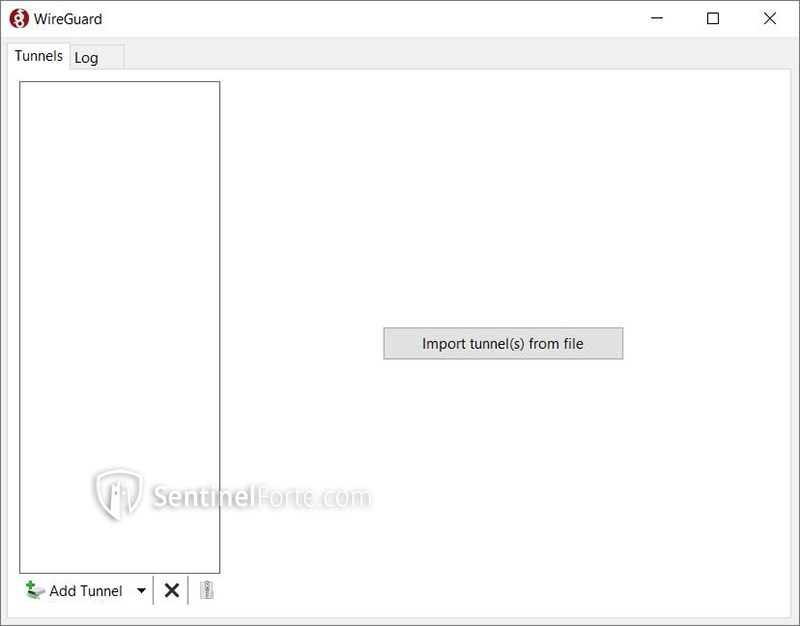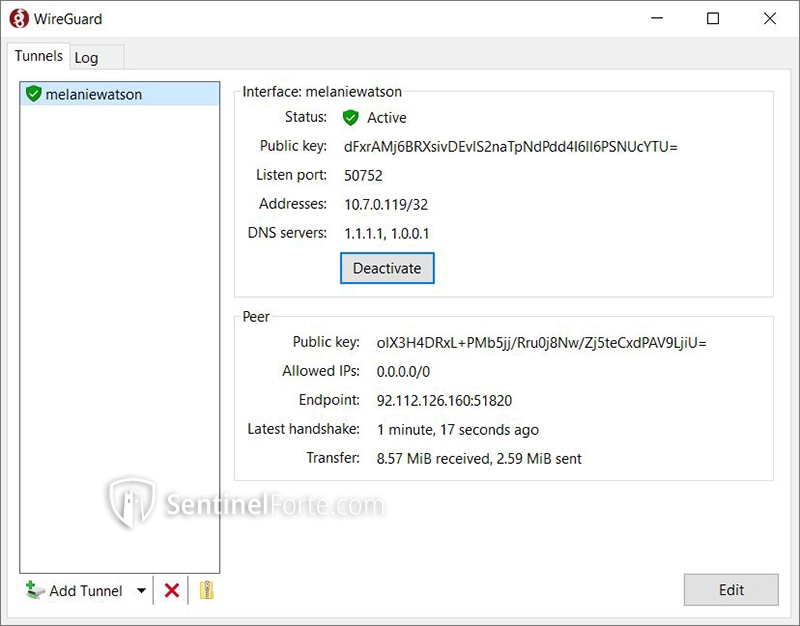WireGuard VPN 2025 for Windows has become one of the most sought-after tools in the VPN landscape thanks to its unmatched speed, minimal codebase, and straightforward design. Built with efficiency at its core, WireGuard offers an elegant alternative to older protocols like OpenVPN and IPSec by delivering both simplicity and cutting-edge cryptography. For Windows users, the 2025 release enhances stability, improves user interface responsiveness, and maintains WireGuard’s reputation as a lightweight yet powerful VPN solution.
Unlike traditional VPNs that often prioritize feature bloat over performance, WireGuard takes a refreshingly lean approach. It focuses on doing one thing exceptionally well: creating secure, high-speed tunnels between devices and servers. The result is a VPN protocol that consumes fewer resources, delivers lower latency, and feels nearly invisible during everyday tasks like streaming, gaming, or working remotely. In today’s environment where data privacy is under increasing scrutiny and ransomware threats loom large, WireGuard’s efficiency and modern encryption standards offer a timely solution for individuals and organizations alike.
For many users, WireGuard represents the future of VPNs. The WireGuard 2025 Installer for Windows ensures easy setup while allowing compatibility with countless VPN services that have embraced the protocol. As more providers integrate WireGuard into their offerings, Windows users can enjoy both free and paid configurations that prioritize transparency and speed without compromising on security.
Mini Review: WireGuard VPN 2025 for Windows
WireGuard has steadily built momentum as the next-generation VPN protocol, and its Windows implementation in 2025 proves why. At its core, WireGuard relies on modern cryptographic primitives such as Curve25519 and ChaCha20, which provide both efficiency and robust security. The result is a VPN that connects almost instantly compared to OpenVPN, where establishing a handshake can sometimes take noticeable seconds. For users who demand quick access—whether connecting to a corporate network or launching a gaming session—the speed advantage is immediately tangible.
Performance benchmarks consistently show that WireGuard outpaces legacy VPN protocols in throughput, sometimes achieving double the speeds under identical network conditions. This makes it an attractive choice for bandwidth-heavy activities like 4K video streaming, file synchronization, or cloud-based workflows. On Windows, the integration is smooth, and the resource footprint is so small that even older PCs can run WireGuard without noticeable slowdowns. This stands in stark contrast to heavier VPN clients that sometimes hog memory and CPU cycles, leading to sluggish multitasking.
Security remains a central selling point. WireGuard’s minimal codebase, around a few thousand lines compared to OpenVPN’s hundreds of thousands, reduces the attack surface and makes it easier to audit. In the current cybersecurity climate, where threats like ransomware and advanced persistent attacks are growing in sophistication, having a protocol that is not only efficient but also easier to verify is crucial. The simplicity of WireGuard also aligns with broader trends in cybersecurity: less complexity often means fewer hidden vulnerabilities. For enterprises concerned with endpoint protection and compliance, this is not just a technical advantage but also a strategic one.
That said, WireGuard is not without drawbacks. While its speed and efficiency are undeniable, it lacks some of the mature features found in older protocols. For example, session management and dynamic IP handling have historically been limited, requiring VPN providers to build custom layers on top of the protocol. For casual users relying on mainstream VPN services, this is often invisible since providers like NordVPN, Mullvad, and ProtonVPN have already implemented these solutions. However, for businesses or IT professionals deploying WireGuard servers independently, these limitations may require additional workarounds.
User experience on Windows in 2025 is clean and functional, though still minimalist. The WireGuard client provides straightforward options to import configuration files and toggle connections, avoiding unnecessary clutter. This simplicity is a strength for those who prefer no-nonsense tools, but it may feel spartan compared to more polished consumer VPN apps that come with dashboards, maps, or built-in ad blockers. Nevertheless, what WireGuard lacks in visual polish, it more than compensates for in reliability. Once configured, the VPN “just works,” maintaining steady connections even under fluctuating network conditions.
In the broader context of cybersecurity trends, WireGuard feels highly relevant. As remote work remains widespread and enterprises adopt zero-trust models, having a VPN protocol that is fast, auditable, and designed for modern infrastructure is invaluable. Its growing adoption across both consumer and enterprise services suggests that WireGuard is not just a niche experiment but a new standard in the making. Compared to OpenVPN, WireGuard trades some of the flexibility of older protocols for efficiency and ease of deployment, a trade-off that makes sense in 2025 where speed, stability, and resilience are at the forefront of digital security needs.
Key Features of WireGuard 2025
Lightweight Codebase
WireGuard is built on a codebase of only a few thousand lines, making it one of the most lightweight VPN protocols available. For Windows users, this means faster updates, fewer bugs, and a reduced chance of hidden vulnerabilities. In practical terms, it translates into a VPN that installs quickly and runs smoothly, even on older systems.
Blazing Fast Connections
Thanks to modern cryptographic algorithms, WireGuard connects almost instantly and delivers superior throughput compared to legacy VPNs. This makes it ideal for gaming, streaming, or real-time applications where low latency is essential. Windows users can enjoy VPN protection without feeling the usual slowdowns associated with encryption.
Strong Modern Encryption
WireGuard employs state-of-the-art cryptography like ChaCha20 for encryption and Poly1305 for data authentication. This combination not only ensures robust protection but also operates efficiently on consumer hardware. For users concerned about ransomware defense or data interception, this offers peace of mind without sacrificing speed.
Simple Configuration and Management
The WireGuard client for Windows focuses on simplicity. Importing configuration files is straightforward, and connecting to a server takes only one click. This is especially useful for non-technical users, while IT professionals can still take advantage of advanced customization through server-side configurations.
Cross-Platform Compatibility
Although optimized for Windows in this release, WireGuard is cross-platform by design. It runs seamlessly on Linux, macOS, Android, and iOS, ensuring users can maintain consistent security across all their devices. This flexibility makes WireGuard attractive for professionals who juggle multiple platforms daily.
Free and Paid Availability
WireGuard is free and open-source at its core. However, many VPN providers now offer WireGuard-based services that integrate premium features like multi-hop routing, dedicated IP addresses, and global server networks. Windows users can therefore choose between DIY setups at no cost or managed subscriptions for convenience and added features.
WireGuard’s rise reflects a broader shift in how VPNs are expected to perform in the digital age. Its lightweight nature, modern cryptography, and speed advantages make it a compelling choice for both casual users and enterprises that value efficiency and security. While it may lack some of the advanced tooling of older VPN protocols, its trajectory suggests it is setting the benchmark for what a VPN should be in 2025. For Windows users looking for a fast, reliable, and future-ready solution, WireGuard VPN 2025 for Windows is an option worth downloading and exploring.
WireGuard VPN 2025 Screenshot
Here’s a quick look at the WireGuard VPN 2025 for Windows interface. True to its philosophy of simplicity, the client keeps everything clean and minimal, showing only the essentials you need to import configurations and establish a secure connection. This screenshot gives new users a clear idea of what to expect when launching the app for the first time.



Pros and Cons of WireGuard VPN 2025 for Windows
WireGuard has built its reputation as one of the fastest and most efficient VPN protocols available today. However, like any software, it comes with advantages and limitations that are worth noting.
Pros
- Exceptional speed: Lightweight protocol with near-instant connection times and high throughput.
- Modern cryptography: Uses ChaCha20 and Poly1305 for secure, efficient encryption and authentication.
- Minimal resource usage: Runs smoothly on Windows systems, including older PCs.
- Open-source transparency: Small codebase makes it easier to audit and trust.
- Cross-platform availability: Works consistently across Windows, Linux, macOS, iOS, and Android.
- Growing adoption: Supported by major VPN providers, offering users more choices.
- Ease of configuration: Simple client interface for importing profiles and connecting.
Cons
- Limited features natively: Lacks advanced options like built-in kill switches, multi-hop routing, or split tunneling (often added by providers).
- Server setup required: For DIY users, deploying a WireGuard server may demand technical knowledge.
- Less flexible than OpenVPN: Not as customizable in handling complex enterprise networks or legacy systems.
- Minimal interface: Some users may prefer richer dashboards available in consumer VPN apps.
How to Download and Install WireGuard VPN 2025 for Windows
Downloading and setting up WireGuard VPN 2025 Installer on Windows is straightforward:
- Visit the official WireGuard website or your VPN provider’s site to download the latest Windows client.
- Download the WireGuard 2025 Installer compatible with your system architecture (32-bit or 64-bit).
- Run the installer and follow the guided steps to complete installation.
- Open the WireGuard client on your Windows device.
- Import a configuration file (.conf) from your VPN provider or your self-hosted WireGuard server.
- Activate the tunnel with a single click and enjoy fast, secure connectivity.
Frequently Asked Questions (FAQ)
Is WireGuard VPN 2025 free?
Yes, WireGuard itself is free and open-source. However, if you use it through a commercial VPN provider, you may need a paid subscription.
What makes WireGuard faster than other VPNs?
Its streamlined design and modern encryption algorithms allow it to establish connections faster and run with lower latency compared to older protocols like OpenVPN or IPSec.
Do I need technical skills to use WireGuard on Windows?
Not necessarily. While setting up your own server requires some networking knowledge, most major VPN providers now offer ready-to-use WireGuard configuration files that can be imported with ease.
Can I run WireGuard alongside other VPN protocols?
Yes, many providers allow users to switch between WireGuard and other protocols within the same VPN app, giving you flexibility depending on your needs.
Is WireGuard secure enough for business use?
WireGuard’s security is robust thanks to its use of state-of-the-art cryptography. However, some enterprises may still prefer OpenVPN for its advanced features and compatibility with legacy systems.
Does WireGuard work in restrictive countries?
WireGuard can be effective, but since it is easier to detect due to its fixed port usage, some providers layer additional obfuscation to bypass censorship in regions with strict firewalls.
What’s the difference between WireGuard client and WireGuard-based VPN apps?
The official WireGuard client is minimalist, offering only core functions. VPN services that support WireGuard often bundle extra features like kill switches, multi-hop, or ad-blocking.
Are there any free VPNs that use WireGuard?
Yes. Several reputable VPN providers now support WireGuard on their free tiers. For example, Proton VPN (Free Plan) includes WireGuard connections with no data cap, making it one of the best options for privacy-conscious users. Another strong choice is Windscribe (Free version), which offers WireGuard alongside 10GB of free data per month and access to multiple server locations. Both services are considered reliable, secure, and among the best free VPNs that integrate WireGuard today.
Download WireGuard VPN 2025 for Windows
Ready to experience a faster, lighter, and more modern VPN protocol? Click the button below to download WireGuard VPN 2025 for Windows and enjoy seamless security with industry-leading performance.
| Software Information | |
|---|---|
| Software Name | WireGuard |
| Version | 2025 Latest Version |
| Developer | Jason A. Donenfeld |
| License Type | Freeware |
| Operating System | Windows 11, 10, 8, 7, XP (32/64-bit) |
| User Rating | |

